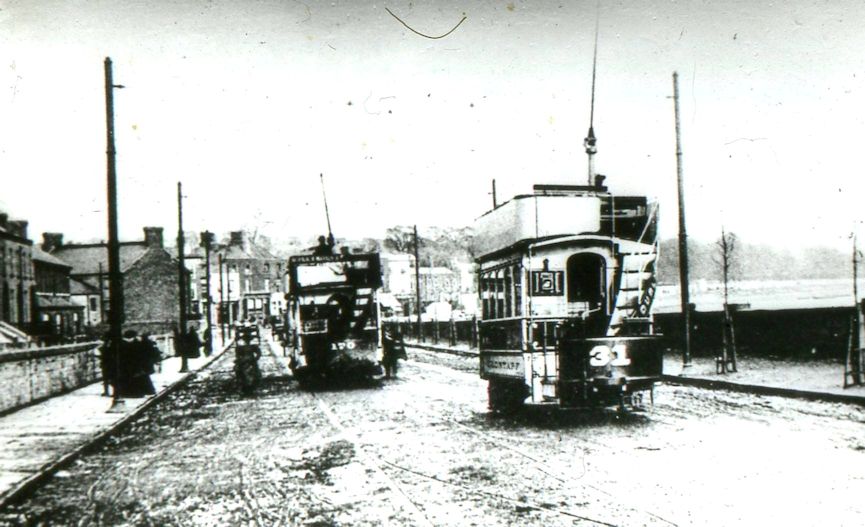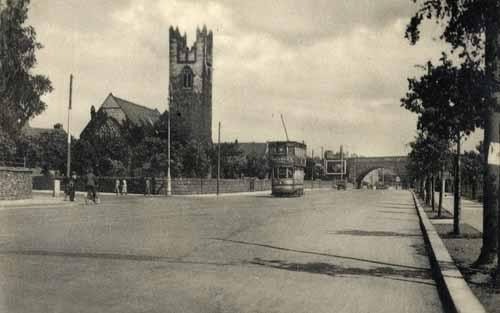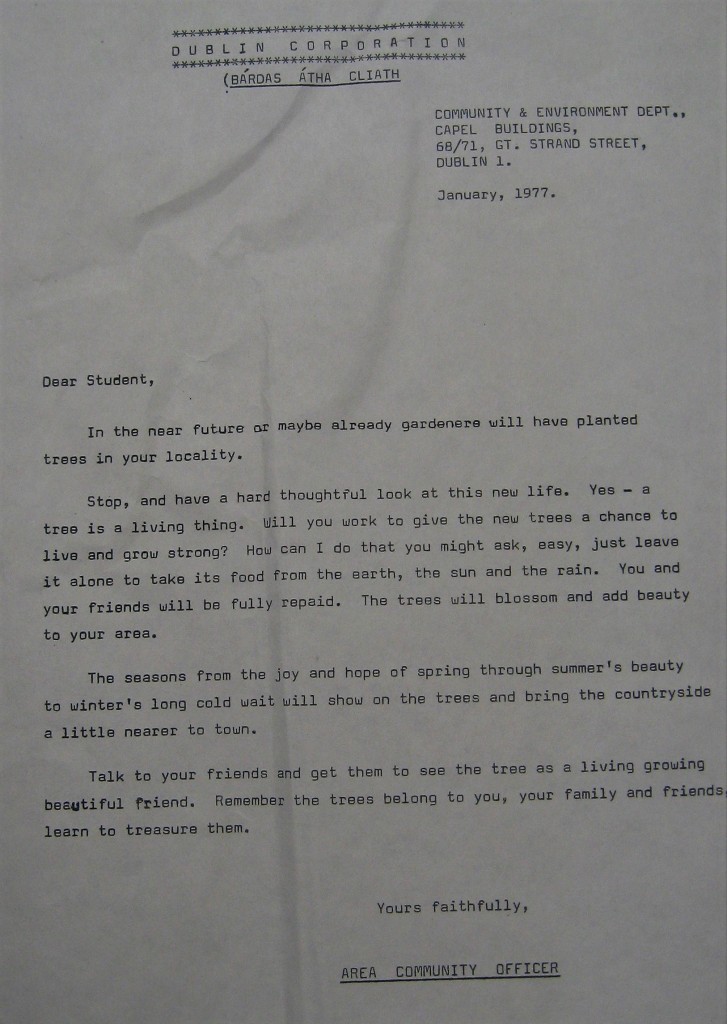Fairview’s Trees – a part of local and National history
“…the promising beginnings of a growth that should give ample and graceful decoration to the park of the future.”

On the 31st October 1908 , in honour of Arbor Day , The Irish Forestry Society (IFS) organized the planting of six trees along the Fairview Improvements Grounds, which were in the process of being reclaimed for what would become modern day Fairview Park. It was quite an impressive ceremony, and each tree, named after a county borough, (Dublin, Belfast, Cork, Limerick, Derry, and Waterford), was planted by one of the visiting dignitaries who included the Lord Mayor, as well as Dr. J.L. Morrow of Clontarf Presbyterian Church and Fr. James Brady, and Fr. Denis Petit, local Roman Catholic Parish Priests. Then “a considerable number” of other trees, part of a consignment of 6000 donated to the IFS by Alexander Dickson, were planted. Similar events took place at Portumna, Doneraile, Blackrock, and Sandycove, with demonstrations organised later in the week at local schools to show the process and benefits of tree planting. Fr. James Brady, for example, provided the demonstration at St. Laurence O’Toole’s School at Seville Place. In planting the “Dublin” tree, the Lord Mayor, Gerald O’Reilly, expressed the hope that in the future “it would not be shifted from the spot where it was planted.”
The Irish Forestry Society had been founded in 1902 in the wake of a privately commissioned report in the 1880s which suggested that the proper reforestation of Ireland would not only have important health benefits for the country but would potentially create a substantial amount of employment. As the then government failed to act in the intervening years the Irish Forestry Society was born and decided to take matters in hand through demonstrations at annual events such as the RDS Spring Show and Cork Exhibition as well as organizing trips to forested estates of native Irish Trees. Former Lord Mayor and MP, Charles Dawson, stated that not only would the trees being planted at Fairview assist in the battle against the “scourge of consumption”, but he noted that many of those involved in the ceremony “worship at different alters” yet it showed that it was “in the power of all creeds and classes to join together and do something for their common country.”
The following year, local landowner, Thomas Picton-Bradshaw of Mount Temple, donated a large number of trees and shrubs for a similar event at Fairview on Arbour Day 1909 to be planted between Annesley Bridge and the Malahide Road. One writer noted that the passer-by “can now see the promising beginnings of a growth that should give ample and graceful decoration to the park of the future.” In truth, while a park had been discussed it was unclear exactly what use the reclaimed lands commonly knowns as the Fairview Sloblands would be put to, and these actions certainly pushed things in favour of the creation of modern day Fairview Park one of the jewels of the Dublin City Council Parks Service.

As the case for and against the park was argued the First World War broke out in 1914 and for its duration the Local Government Board took over the then small amount of reclaimed land at Fairview for a type of Outdoor Relief scheme growing cheap vegetables for Dublin. This pushed back the possible opening of the park, and the then Corporation, finding the 3 pence charge per load quite lucrative, extended the dumping of waste at the area well into the 1920s covering much of the already reclaimed land used by the Local Government Board during the war. In 1920, the prompt actions of Alderman David Quaid, had stopped a motion being rushed through which would have seen much of the reclaimed parkland leased to a market farmer.
It would be 1934 before Dublin Corporation adopted a set of bye-laws which would make Fairview Park a reality. But back in 1908 the influence of those embryonic steps of the Irish Forestry Society, together with the local clergy, business, and political community, was far-reaching. Limerick had been “excited greatly” by happenings at Fairview, and that city’s Corporation announced they were purchasing 200 trees to be planted in various wards throughout that city. Others would soon follow.
As the Fairview Trees near their 110th anniversary it’s unlikely that anyone could tell you which tree is called Dublin, let alone Belfast or Cork today. However, they are a constant reminder of how a community came together and working with their local authority, first British and then Irish, were determined to direct the shape their environment would take. In his address at that 1908 ceremony, Charles Dawson, Honorary Secretary of the IFS, stated that the object of that day’s exercise was to “make a demonstration with a view to compelling the Government to undertake the work of re-afforesting Ireland. The people could not do it; but the Government could.” At that time, it was estimated only 1.5% of Ireland’s lands had forests. A succession of acts throughout the 1920s and an ambitious EU funded programme since the 1980s sees over 650,000 hectares of woodlands in Ireland today.

Dublin Corporation letter to schools in 1977
Those dynamic Clontarf and Fairview residents 109 years ago little realized what they were starting that day at Fairview. Those first small steps along the sloblands have left us an extraordinary legacy. It’s a legacy which we should be celebrating in 2018 not destroying.
All comments , clarifications and additional information welcome. Contact : eastwallhistory@gmail.com

